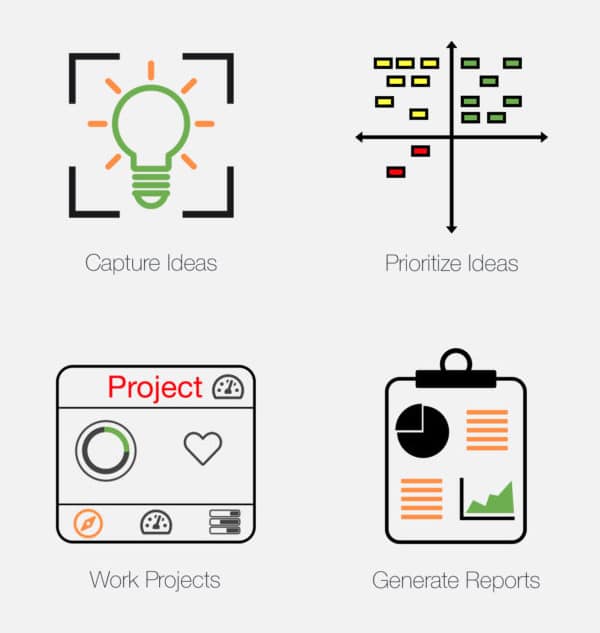Here’s How Idea Management Software Works Best:
Set a Goal and Make It Visible
The key to getting good ideas, is to start with a small number of stated goals. These goals should focus ideas on work that will impact the strategic initiatives and KPIs the executive team is focused on. It is important to keep the goals visible so that others can see them and have access to them.

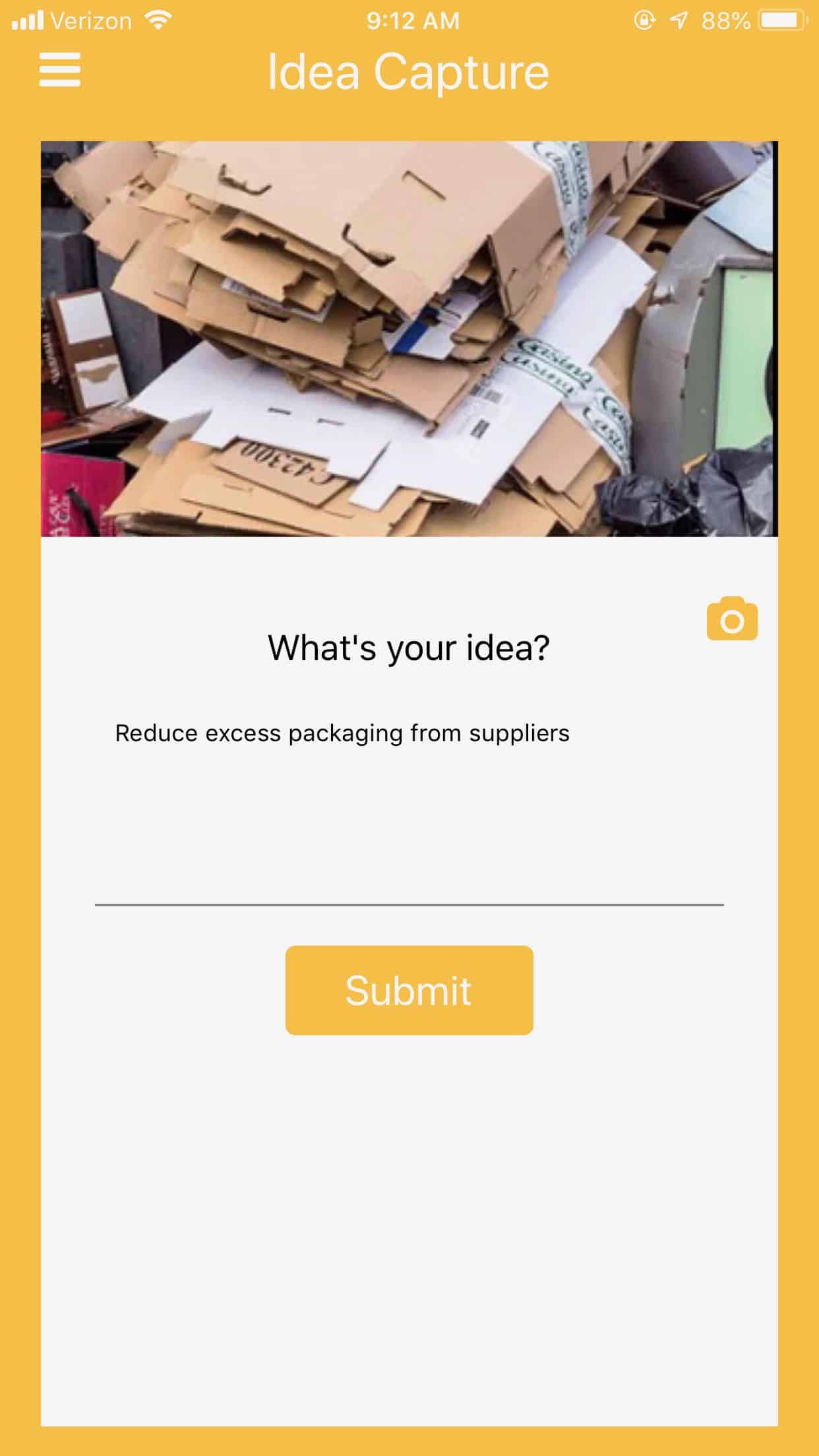
Make it Easy to Collect Ideas When They Happen
Don’t let a good idea get past you without collecting it. Put yourself on the floor; because this is where the action is. Talk to people doing the work and ask them for ideas to eliminate waste and variation. Gemba Walks because they are a great way to solicit and capture ideas.
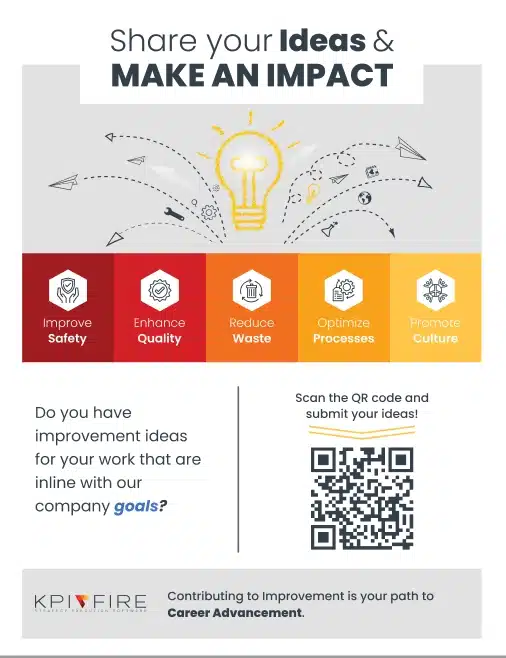
Separate Ideas from Active Projects
KPI Fire makes it easy to keep “good ideas” separate from active projects. If your organization has a bad habit of starting too many things, and finishing too few, you need an idea funnel. This is where ideas can be evaluated and prioritized.
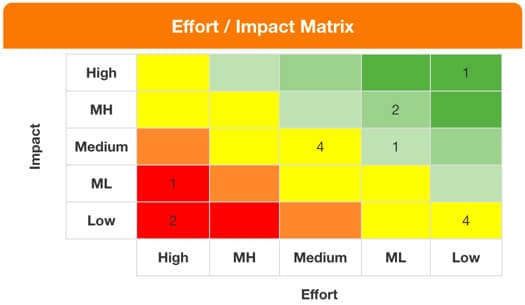
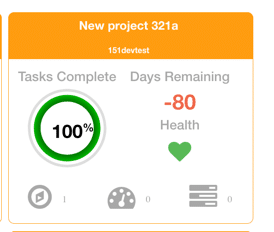
Take Action: Turn Ideas Into Projects
Finally, take action. Turn those great suggestions into DMAIC projects, KAIZEN events, or QUICK WINS. KPI Fire has built-in workflows for common problem-solving methods. Or you can create your own. Upload tools and templates so everyone in your company has a standard problem-solving process. KPI Fire is the most effective and intuitive Lean Six Sigma program management software on the market. We are trusted by many great companies with world-class Lean/Six Sigma programs.
Celebrate Success by Tracking Project Benefits
Track the hard and soft savings from your improvement projects. Celebrating successes engages your project team and creates more success.
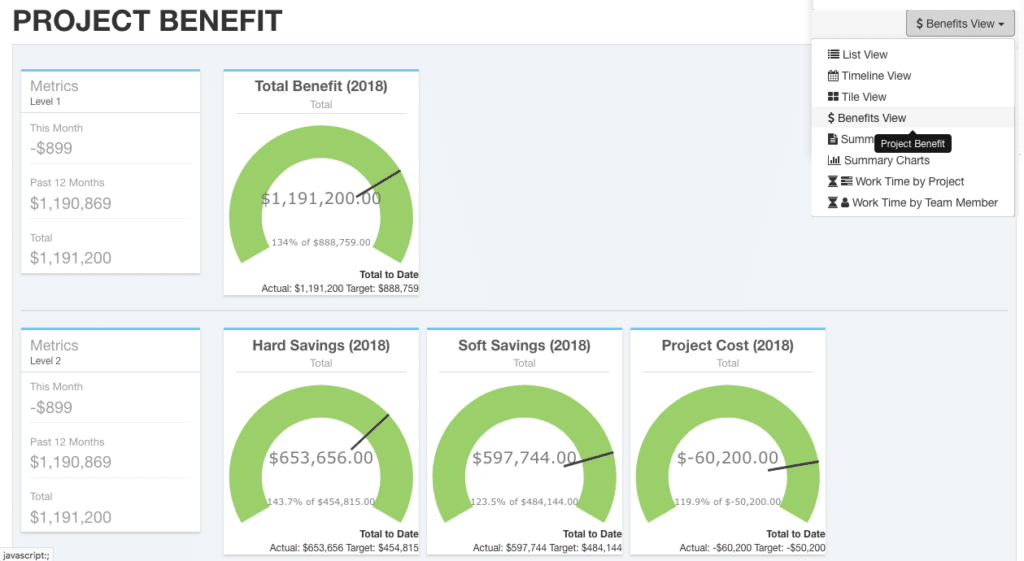
Quantify the Impact of
Your Continuous Improvement Program With KPI Fire
Unlock the full potential of your continuous improvement initiatives with KPI Fire. Our continuous improvement software tools let you accurately measure and analyze the impact of your improvement projects.
By leveraging built-in templates for methodologies like DMAIC, PDCA, and Lean Six Sigma, KPI Fire ensures that your projects are effective.
Our intuitive dashboards and visual management tools allow you to track progress in real time, ensuring transparency and accountability across your organization.
With KPI Fire, you can prioritize high-impact projects, streamline problem-solving processes, and celebrate your every success with concrete data.
Use KPI Fire and Follow These Steps to Continuous Improvement
- Firstly, capture and prioritize improvement ideas with effort vs impact analysis.
- Next, manage projects with a standard approach (DMAIC, PDCA, 8D, other).
- Don’t forget to track and report project status and project benefits,
- And be sure to share best practices to become a learning organization.
FAQs
What is an Idea Funnel?
An “idea funnel” or “project hopper” are terms often used in the context of innovation, creativity, and project management to describe a systematic approach to generating, evaluating, and prioritizing ideas or projects. These concepts help organizations or individuals manage their creative processes and ensure that valuable ideas are developed into successful projects.
What is a Project Hopper?
A Project Hopper in the context of Lean Six Sigma is a system for collecting, prioritizing, and selecting Lean Six Sigma projects. It is a way to ensure that the most important and valuable projects are selected and executed.
The Project Hopper typically consists of a process for collecting ideas and suggestions for projects, as well as a criteria for evaluating and prioritizing those ideas. The criteria may include factors such as the potential impact of the project, the feasibility of the project, and the cost of the project.
Once the projects have been prioritized, the Project Hopper process typically includes a gatekeeping process to select the projects that will be executed. The gatekeeping process may involve a review by a team of stakeholders, such as executives, process owners, and Lean Six Sigma experts.
The Project Hopper process is a valuable tool for organizations that are trying to implement Lean Six Sigma. It helps to ensure that the right projects are selected and executed, and that the organization is getting the most value out of its Lean Six Sigma investment.
How to Know if You Do Need a Project Hopper?
You may need a project hopper if:
- You have a lot of ideas for projects, but you’re not sure which ones are the most important or feasible.
- You’re struggling to prioritize your projects and/or ideas and to focus on the most important ones.
- You’re having trouble keeping track of all of your projects and/or ideas and their progress.
- You’re not getting enough input from stakeholders on your projects.
- Your projects are often running late or over budget.
- You say “yes” to start too many projects and finish too few.
What is a Project Backlog?
A project backlog is a prioritized list of work items that need to be completed in order to deliver a project. It typically includes tasks, features, bugs, and other items that need to be addressed. The backlog is used by the project team to track their progress and to ensure that they are working on the most important items first.
Project backlogs are often used in agile project management, but they can also be used in other project management methodologies. In agile, the backlog is typically updated on a regular basis, such as at the beginning of each sprint. This allows the team to adjust their priorities as needed and to ensure that they are still working on the most important items.
Project backlogs are typically organized by priority, with the most important items at the top of the list. However, other factors, such as dependencies and risk, may also be considered when prioritizing the backlog. They are a valuable tool for any project manager. You can create and manage a backlog that will help you deliver your project on time and within budget.
How Is an Idea Funnel Different than a Suggestion box?
An Ideal Funnel or Project Hopper is a place to collect and prioritize ideas for improvement. While this might sounds much like a suggestion box, they are really quite different. Suggestion boxes are usually passive and don’t tend to have a specific goal or direction. An idea Funnel as part of a continuous improvement program should have stated goals such as improving safety, improving productivity, reducing waste etc.
Why is soliciting employee ideas a good idea ?
Soliciting improvement ideas from employees can be incredibly beneficial for a company. Here are some compelling reasons why companies might want to encourage this:
- Leverage Frontline Insights: Employees working directly with processes, customers, and products often notice inefficiencies or have ideas that management might overlook. Their insights can lead to more effective and practical improvements.
- Increase Employee Engagement: Inviting employees to share their ideas gives them a sense of ownership and involvement in the company’s success. This often boosts morale, engagement, and job satisfaction.
- Foster a Culture of Continuous Improvement: When employees are encouraged to share ideas, it promotes a mindset of innovation and continuous improvement across the company, making it more adaptable and proactive in solving challenges.
- Improve Efficiency and Reduce Costs: Employees may have ideas that streamline processes or reduce waste, leading to cost savings and more efficient operations.
- Enhance Customer Experience: Employees interacting with customers directly can offer ideas that improve service, satisfaction, and retention, ultimately benefiting customer relationships.
- Increase Adaptability: Soliciting and implementing new ideas helps the company stay agile, respond quickly to changes in the market, and maintain a competitive edge.
- Build Trust and Loyalty: When employees see their ideas taken seriously, they feel valued and trusted, which can improve loyalty and reduce turnover.
- Identify Untapped Talent: Employees who contribute ideas often demonstrate initiative and problem-solving skills, revealing potential leaders and innovators within the company.
Encouraging and implementing employee suggestions can help align everyone’s efforts towards common goals, making the company stronger, more innovative, and more resilient.
